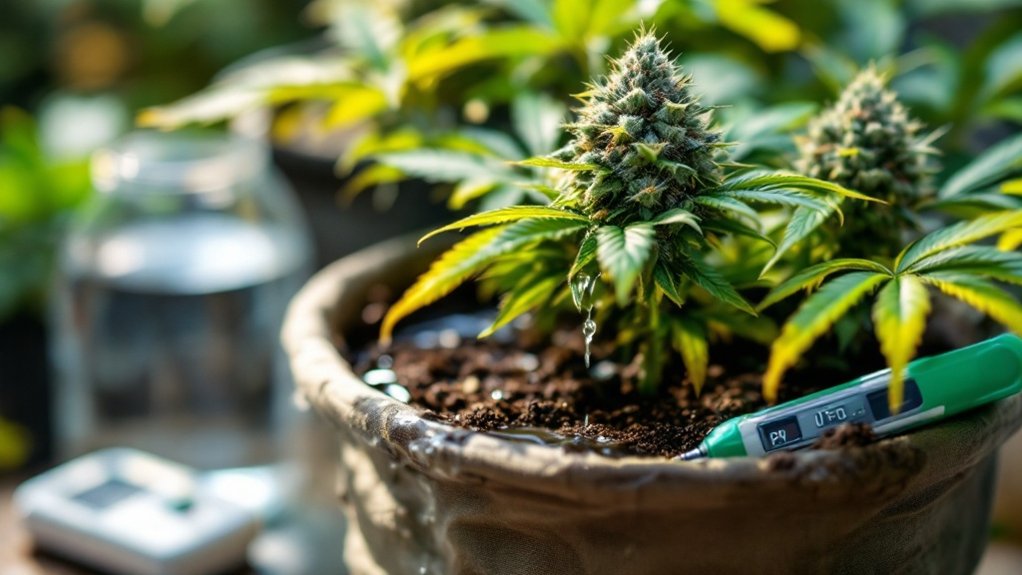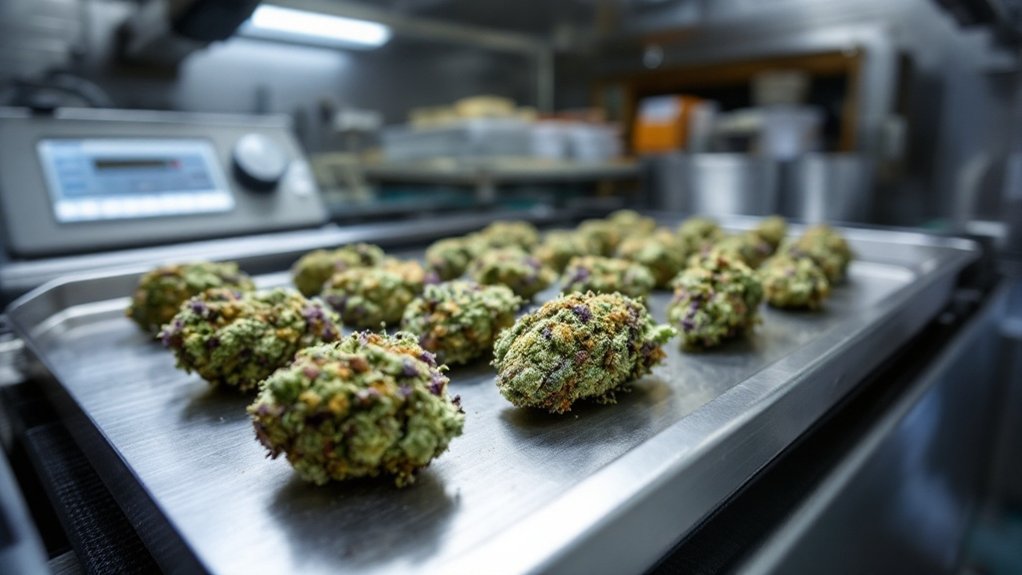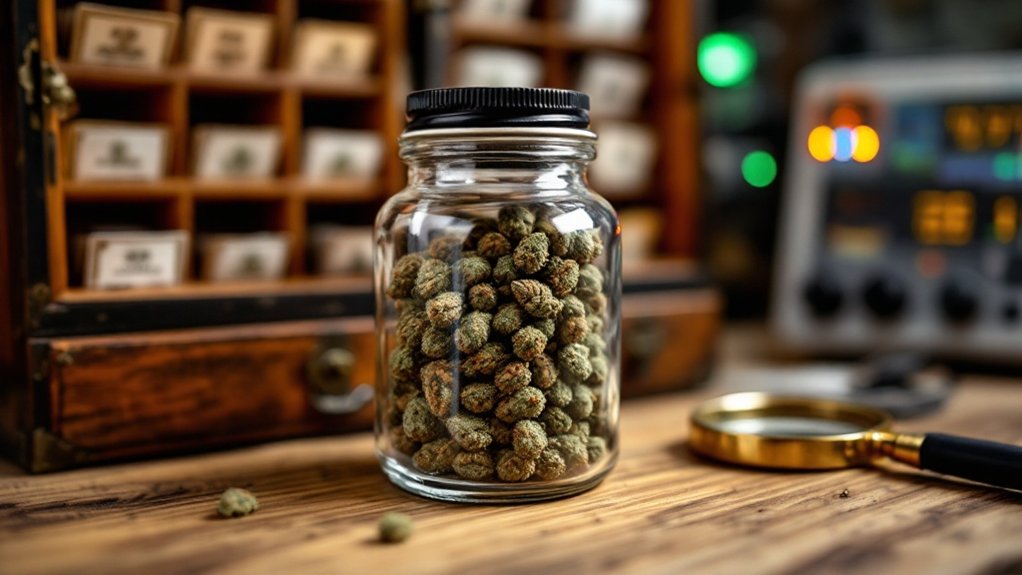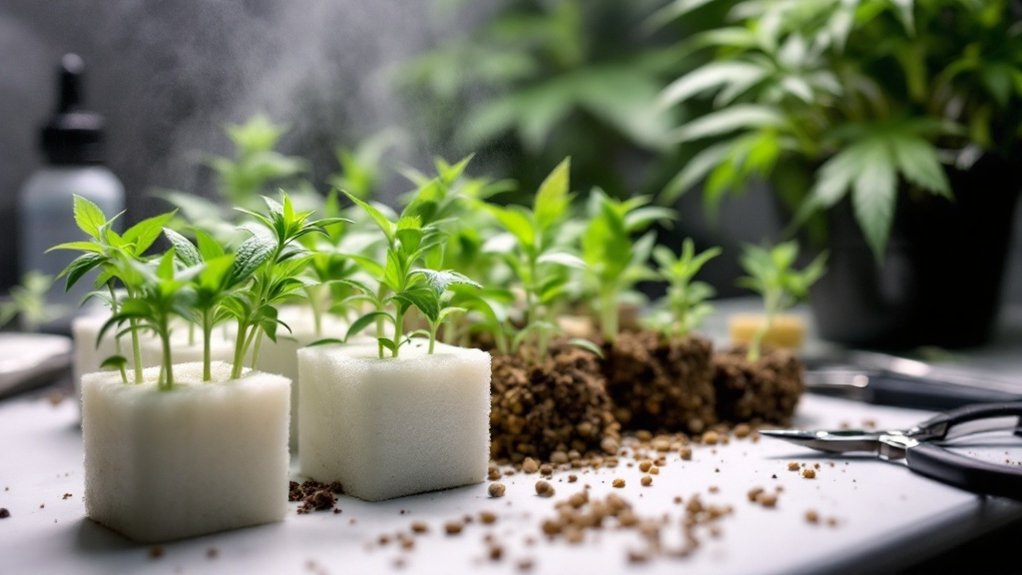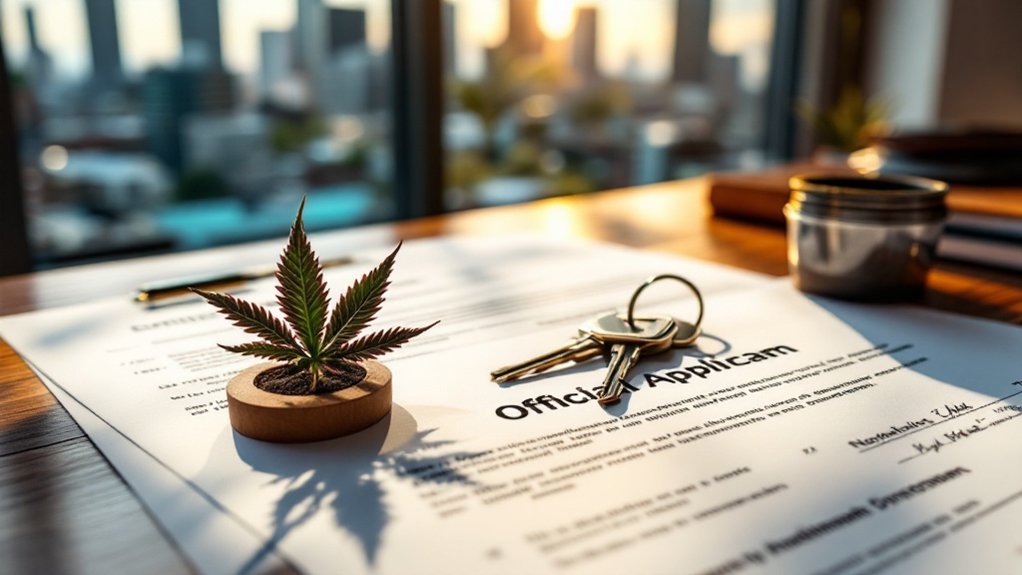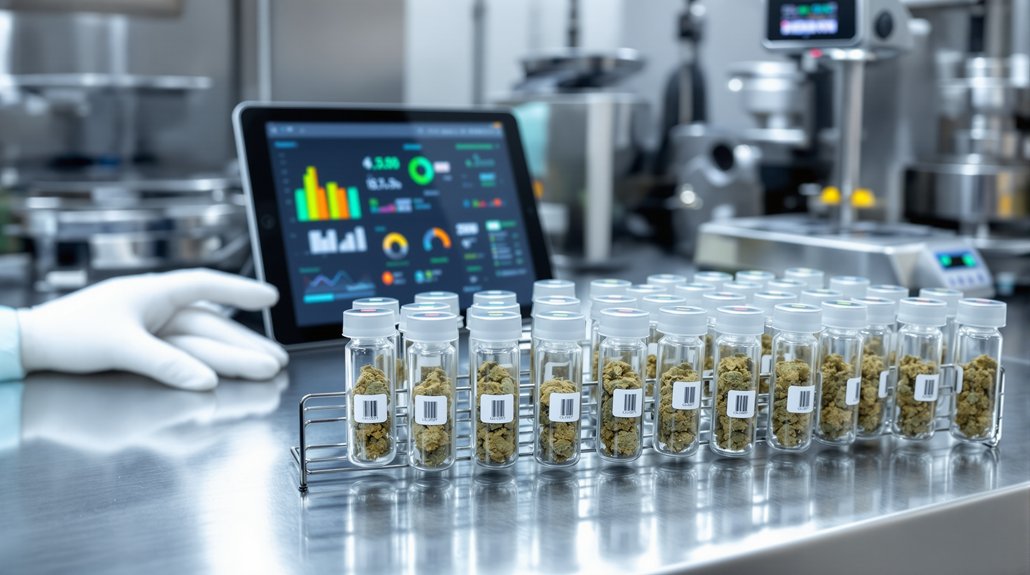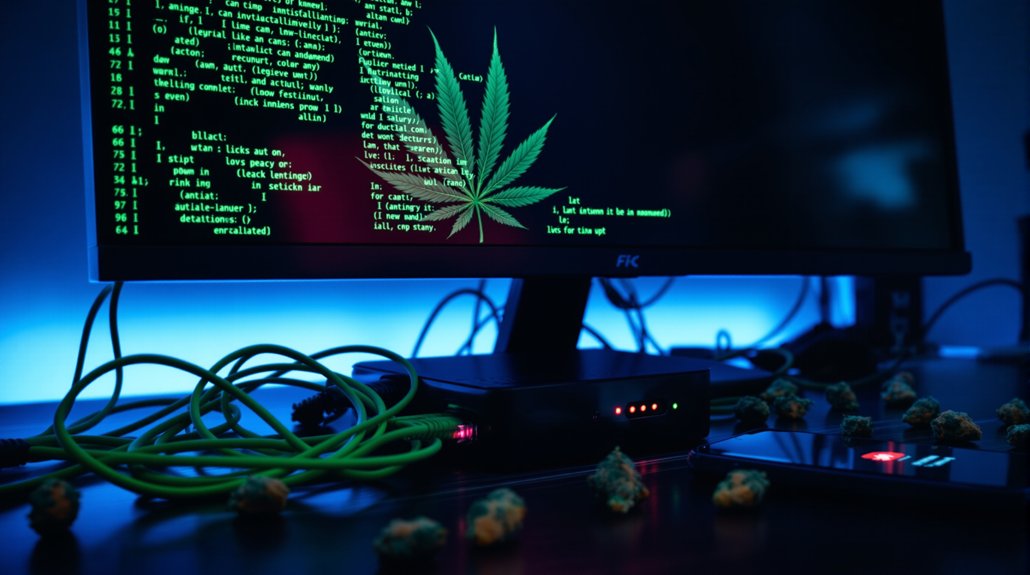Flushing cannabis plants involves running pure pH-balanced water through the growing medium for 7-14 days before harvest. This process removes excess nutrients and salts, resulting in smoother-tasting buds with improved burn quality. Growers should begin flushing during late flowering, typically 1-2 weeks before harvest, and continue until runoff becomes clear. Different growing media require adjusted approaches, with hydroponic systems needing more aggressive flushing than soil-based grows. Proper technique guarantees the natural flavors and aromas fully develop before the final cut.
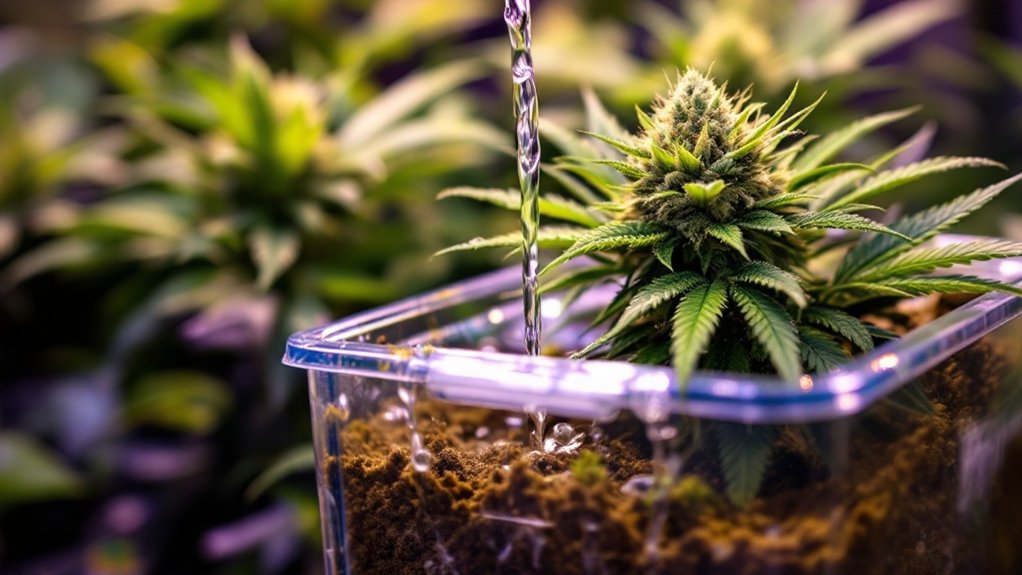
Every experienced cannabis cultivator understands that proper flushing is an important final step in the growing process. This technique involves removing excess nutrients and salts from the growing medium before harvest, resulting in smoother-tasting final product with improved burn quality and reduced harshness. Timing this process correctly is vital for ideal results without compromising flower development or potency.
Flushing typically begins during the late flowering stage, approximately 1-2 weeks before harvest. For cannabis strains with an 8-week flowering period, growers should initiate flushing around week 6. The ideal flushing duration ranges from 7 to 14 days, though this timeframe should be adjusted based on specific strain characteristics and visible trichome maturity. Starting too early may result in underdeveloped flowers, while delaying too long reduces effectiveness. Monitoring for cloudy white trichomes can provide a visual indication that plants are ready for flushing. Proper magnesium levels are essential during this stage to ensure healthy flower development and avoid magnesium deficiency symptoms.
The process requires plain, untreated water with no added nutrients. Water pH should be maintained between 6.0 and 6.8 for soil grows, though specific adjustments may be necessary for alternative growing media. Most municipal tap water falls within the ideal range, but verification with a pH meter guarantees plant health throughout the flushing period. This deep cleaning approach allows plants to utilize remaining nutrients in their tissues before harvest. Chemically altered or softened water sources should be avoided to prevent introducing unwanted elements.
When performing the flush, growers thoroughly saturate the growing medium with water equal to or exceeding the container’s volume. This process should be repeated several times during each flushing session. The water should remain in contact with the medium momentarily to dissolve accumulated salts before allowing complete drainage. Tools such as garden hoses, spray nozzles, and clean buckets can facilitate the process, particularly for larger operations.
Monitoring runoff provides vital feedback on flushing effectiveness. Initial runoff typically appears discolored due to dissolved nutrients and salts. Successful flushing is indicated when runoff becomes clear and TDS measurements drop below 50 ppm or match the input water values. Similarly, electrical conductivity should decrease in the runoff water.
Different growing media require adjustments to the flushing approach. Coco and hydroponic systems often necessitate more aggressive flushing due to higher salt retention, while soil-based grows require careful monitoring to prevent overwatering.
Regardless of medium, proper flushing removes unwanted elements from plant tissues, allowing the natural flavors and aromas of the cannabis to develop fully before harvest.
Frequently Asked Questions
Does Flushing Reduce Cannabis Potency or THC Levels?
Research findings consistently indicate that flushing does not reduce cannabis potency or THC levels.
Multiple controlled studies examining various flushing periods (0-14 days) found no statistically significant differences in THC percentages, which typically ranged from 21.58% to 22.73%.
While slight numerical variations were occasionally observed between flushed and non-flushed samples, these differences never reached statistical significance.
The overall cannabinoid profile, including THC concentration, remains stable regardless of flushing practices.
Can I Flush With Additives Instead of Plain Water?
Yes, cannabis plants can be flushed with additives instead of plain water.
Specialized flushing solutions containing enzymes, carbohydrates, or beneficial microbes are designed to break down salt buildup while maintaining plant health. These products aim to chelate excess nutrients and improve nutrient mobility during the flushing process.
Some growers prefer this method as it provides a more gradual shift than plain water, potentially reducing stress on the plant while still removing unwanted compounds from the growing medium.
Should Autoflowering Cannabis Plants Be Flushed Differently Than Photoperiod Plants?
Yes, autoflowering cannabis plants require different flushing approaches compared to photoperiod plants.
Autoflowers benefit from shorter flush periods (5-7 days) due to their accelerated lifecycle and smaller nutrient reserves. Their predetermined growth timeline means timing must align precisely with trichome maturation rather than calendar dates.
Less aggressive flushing techniques help prevent stress in these sensitive plants.
Photoperiod plants, conversely, tolerate longer flushes (10-14 days) and can be managed more flexibly through light cycle manipulation.
How Does Soil Composition Affect the Flushing Process?
Soil composition considerably impacts flushing effectiveness. Heavy clay soils retain nutrients tenaciously, requiring more water and time for complete flushing.
Sandy soils, conversely, drain quickly and flush more efficiently. Organic-rich soils present challenges as they continue releasing nutrients slowly, potentially counteracting flushing efforts.
Soil pH and microbial activity are also affected during flushing; amended organic soils may lose beneficial microbes when flushed, while chemically fertilized soils experience less microbial disruption.
The interaction between soil type and nutrient form determines overall flushing results.
Can Over-Flushing Damage My Cannabis Plants Before Harvest?
Over-flushing can indeed damage cannabis plants before harvest.
Extended flushing periods of 10-14 days often lead to yellowing, necrotic leaves and nutrient lockout, preventing plants from accessing essential minerals.
Research indicates that excessive flushing may compromise trichome development during critical maturation phases.
Plants subjected to prolonged nutrient deprivation typically show signs of stress, including dried foliage and stunted flower development.
While flushing aims to improve final product quality, the scientific evidence supporting extended flushing periods remains limited and sometimes contradictory.
